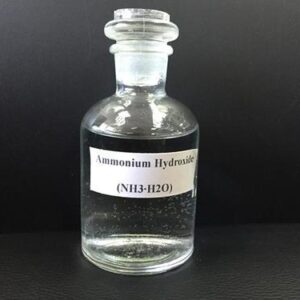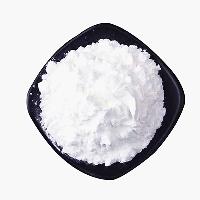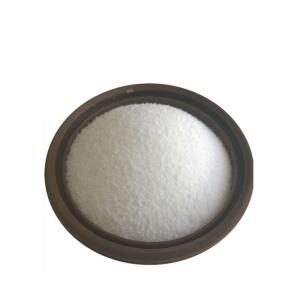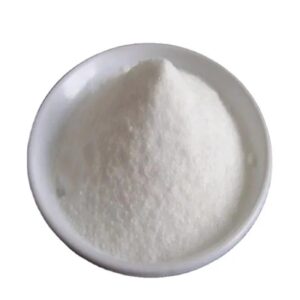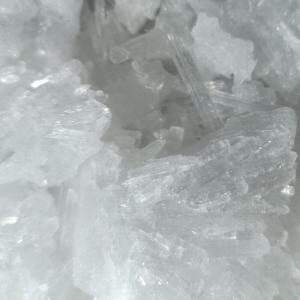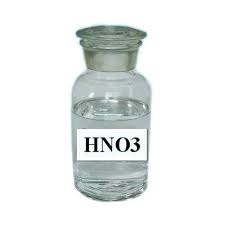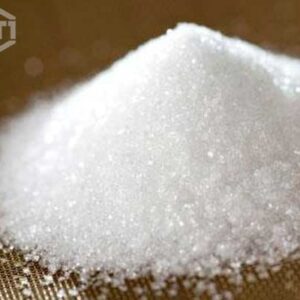Buy factory Ammonium Hydroxide/ CAS NO. 1336-21-6 wholesale price
Ammonium Hydroxide: Properties, Applications, Safety, and Industrial Supply Access
Introduction
Ammonium Hydroxide (NH₄OH), also known as aqueous ammonia or ammonia solution, is a colorless liquid formed when ammonia gas dissolves in water. It’s widely used in industrial manufacturing, laboratories, agriculture, cleaning formulations, and wastewater treatment.
Informational: Chemical Structure and Key Properties
Ammonium hydroxide is not a single compound but rather a solution of ammonia (NH₃) in water, where a small fraction reacts to form hydroxide ions (OH⁻) and ammonium ions (NH₄⁺).
Chemical Overview
| Parameter | Details |
|---|---|
| Chemical Name | Ammonium Hydroxide |
| Common Names | Aqueous Ammonia, Ammonia Solution |
| Chemical Formula | NH₄OH (often written as NH₃·H₂O) |
| CAS Number | 1336-21-6 |
| Molecular Weight | 35.05 g/mol |
| Appearance | Colorless liquid with strong pungent odor |
| Density | ~0.91 g/cm³ (at 25°C for 10% solution) |
| Boiling Point | Variable, depends on concentration |
| Solubility | Completely soluble in water; reacts with acids and metals |
| pH (10% solution) | 11.0 – 12.0 (strongly basic) |
In water, the equilibrium reaction is:
NH₃ + H₂O ⇌ NH₄⁺ + OH⁻
This balance makes ammonium hydroxide an alkaline solution capable of neutralizing acids and dissolving organic materials.
Navigational: Common Applications and Industrial Uses
Ammonium hydroxide’s usefulness spans many industries due to its alkaline reactivity, volatility, and buffering ability.
1. Industrial Manufacturing
- Acts as a pH regulator in textile dyeing, rubber vulcanization, and detergent formulation.
- Used in the production of fertilizers, plastics, and synthetic fibers.
- Essential for etching and cleaning silicon wafers in the semiconductor industry.
2. Laboratory and Analytical Uses
- Functions as a reagent for preparing metal hydroxides (e.g., copper(II) hydroxide).
- Used as a complexing agent in qualitative inorganic analysis.
- Serves as a buffer solution in biochemical and chemical research.
3. Food and Beverage Industry (Under Regulation)
- Food-grade ammonium hydroxide is sometimes approved as a pH adjuster or leavening agent, regulated by FDA (21 CFR 173.315).
- Used under strict concentration limits to ensure consumer safety.
4. Agriculture and Environmental Control
- Employed in nitrogen supplementation for soils and livestock feed.
- Used in wastewater treatment to control pH and neutralize acidic contaminants.
5. Cleaning and Sanitizing
- Common ingredient in household and industrial cleaners, especially for glass, stainless steel, and surfaces contaminated by grease or organic residues.
Commercial: Market Insights and Quality Grades
The commercial value of ammonium hydroxide depends on purity, concentration, and industry application.
| Grade | Typical Concentration | Application |
|---|---|---|
| Reagent Grade | 25–30% NH₃ | Analytical chemistry, research labs |
| Industrial Grade | 10–25% NH₃ | Manufacturing, water treatment |
| Food Grade | ≤1% NH₃ | Regulated food processing use |
| Electronic Grade | ≥28% NH₃ | Semiconductor and circuit cleaning |
Market Demand
The global ammonium hydroxide market continues to grow steadily, driven by:
- Expanding chemical manufacturing in Asia-Pacific regions.
- Rising environmental treatment demands.
- Increasing industrial cleaning applications.
Health, Safety, and Environmental Considerations
While useful, ammonium hydroxide must be handled carefully due to its corrosive and irritant properties.
Health Hazards
- Inhalation: Can irritate or burn respiratory tissues.
- Skin Contact: Causes irritation or chemical burns on prolonged exposure.
- Eye Contact: May lead to serious eye damage.
- Ingestion: Harmful and potentially corrosive to mucous membranes.
Safety Measures
- Always handle in a well-ventilated area or fume hood.
- Wear chemical-resistant gloves, goggles, and protective clothing.
- In case of spills, neutralize with dilute acid (e.g., acetic acid) and flush with water.
Storage Guidelines
- Store in cool, dry, and ventilated environments.
- Keep away from acids, halogens, and oxidizing agents.
- Use containers made of corrosion-resistant materials (HDPE or stainless steel).
Transactional: Legal Handling and Supply Access
Ammonium hydroxide is not a controlled substance, but its transport, storage, and disposal are regulated due to its hazard classification.
Regulatory Overview
| Regulatory Body | Classification / Guidelines |
|---|---|
| OSHA (U.S.) | Classified as a corrosive liquid; requires GHS labeling |
| EPA (U.S.) | Subject to Toxic Release Inventory reporting |
| REACH (EU) | Regulated under EC No. 1907/2006 for safe chemical use |
| DOT (Transport) | Classified as hazardous material (UN 2672) |
| Globally Harmonized System (GHS) | Corrosive and irritant hazard codes H314, H335 |
Procurement for Institutional Use
Licensed laboratories, universities, and manufacturers can source ammonium hydroxide from authorized distributors offering:
- Safety Data Sheets (SDS)
- Quality certificates (ISO, GMP, or ACS standards)
- Custom concentration formulations (5%–30%)
Suppliers typically require end-use declarations for high-concentration or bulk orders, ensuring compliance with workplace safety laws.
Environmental Management
Ammonium hydroxide is biodegradable but must be neutralized before disposal. Waste solutions can contribute to ammonia pollution in waterways, leading to:
- Oxygen depletion in aquatic systems.
- Toxicity to fish and invertebrates.
Proper disposal includes neutralization and dilution under the supervision of environmental safety officers.
Comparison Table: Ammonium Hydroxide vs. Related Alkalis
| Property | Ammonium Hydroxide (NH₄OH) | Sodium Hydroxide (NaOH) | Potassium Hydroxide (KOH) |
|---|---|---|---|
| Form | Aqueous solution | Solid / pellets | Solid / flakes |
| Alkalinity | Moderate | Very strong | Strong |
| Volatility | High (ammonia vapor) | Non-volatile | Non-volatile |
| Toxicity | Irritant, corrosive | Corrosive | Corrosive |
| Common Uses | Cleaning, pH control, fertilizer | Soap making, drain cleaning | Batteries, biodiesel production |
Conclusion
Ammonium hydroxide is one of the most versatile and economically important alkaline solutions in modern industry. From chemical synthesis to environmental treatment, its applications span nearly every scientific and industrial discipline.
However, because of its corrosive and volatile nature, correct handling, labeling, and storage are critical. By following OSHA, EPA, and REACH regulations, institutions can ensure safe and compliant use while maintaining environmental responsibility.
Keywords
Ammonium hydroxide • Aqueous ammonia • Ammonia solution • NH₄OH properties • Ammonium hydroxide uses • Industrial cleaning chemicals • pH control solution • Laboratory reagent ammonia • Chemical safety data ammonium hydroxide
Specifications:
- Related Substances: 99%
- Residue on Ignition: 0.3%-0.5%
- Heavy Metal Content: 0%
- Production Capacity: 100 Metric Tons per week
- Delivery Time: 1-2 business days
- Port: Shanghai
Ordering Information:
- Minimum Order Quantity: 1 Kilogram (for small orders)
- Production Capacity: 100 Metric Tons per week
- Delivery Time: 1-2 business days
- Transport: Available by sea or air freight
Safety Information:
- Storage: Store in a cool, dry place away from incompatible materials such as strong acids. Avoid contact with skin and eyes, as ammonium hydroxide is corrosive and may cause burns.
- Transport: Transported in well-ventilated containers to prevent pressure buildup from evaporating ammonia gas.
Where to Buy:
- Wholesale Pricing: Available from reliable suppliers and manufacturers.
- Shipping: Worldwide shipping with quick delivery times.
Certifications:
- COA (Certificate of Analysis)
- MSDS (Material Safety Data Sheet)
- TDS (Technical Data Sheet)
For pricing, bulk inquiries, and further details, contact suppliers or manufacturers who specialize in chemical production and distribution. Make sure to confirm compliance with local regulations for the use and handling of ammonium hydroxide.
Ammonium hydroxide • Aqueous ammonia • Ammonia solution • NH₄OH properties • Ammonium hydroxide uses • Industrial cleaning chemicals • pH control solution • Laboratory reagent ammonia • Chemical safety data ammonium hydroxide

